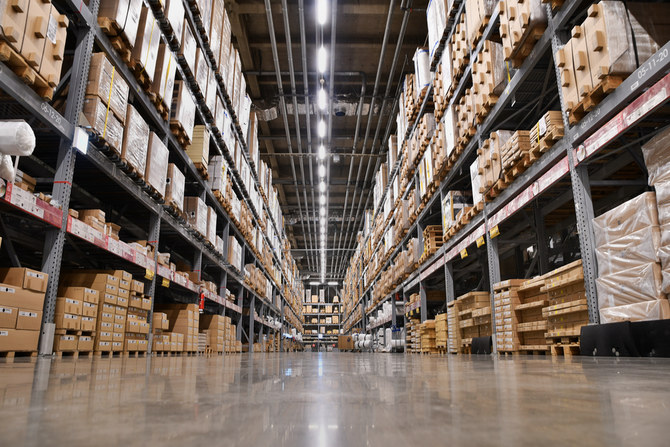RIYADH: Warehouse rents in Riyadh rose by 20 percent in the first half as the city accommodated the growing demand for specialized stockrooms thanks to the e-commerce boom, according to Knight Frank.
The London-based real estate consultancy revealed that warehouse rents in the Kingdom remained upward as they climbed 15 percent in Jeddah and 20 percent in Riyadh over the last 12 months.
“For developers, the industrial market is their oyster given that the most sought-after stock — high quality, internationally specified warehouses — remains in short supply,” said Faisal Durrani, Knight Frank’s head of research for the Middle East and North Africa region.
He added: “For now, the volume of planned stock is also limited. In Riyadh, for instance, the last 12 months have witnessed the completion of approximately 500,000 sq. meters. Many occupiers are now exploring build-to-suit models — notably the e-commerce and FMCG (fast-moving consumer goods) sectors.”
Average rents for warehouses in Riyadh in the first half stood at SR190 ($50.65) per sq. meter, with Logistics Park touching SR280 per sq. meter. The place is the city’s most expensive warehousing district.
On the other hand, the average lease rates of Jeddah and Dammam between January and June were about SR205 and SR230 per sq. meter, respectively.
The report added that Saudi Arabia’s e-commerce sector has witnessed strong growth over the past few years, mainly due to the rise in internet penetration and network availability in the Kingdom.
“The Kingdom’s e-commerce sector has been supercharged in the wake of the pandemic, as has been the case elsewhere in the world. The seemingly permanent shift in attitudes toward online shopping is particularly notable among Generation Z — those below 25,” the report added.
The study also highlighted the deal signed by the Saudi Authority for Industrial Cities and Technology Zones, also known as MODON, to build 14 high-tech warehouses in Jeddah expected to be tenanted by global e-commerce companies.
“The Kingdom is in the midst of an exciting surge in warehousing demand. This upswing can be attributed to factors like the thriving e-commerce sector and the realization of ambitious megaprojects in the region,” said Harmen De Jong, partner and head of strategy and consulting at Knight Frank for the MENA region.
De Jong also lauded the efforts of the Saudi government to turn the Kingdom into a top-rated industrial and logistics market.
He added: “The government’s commitment to fostering a world-class industrial and logistics market in the Kingdom is clear. The plan to construct 59 logistics centers by 2030, covering over 100 million sq. meters, for instance, will help to further support the development of the rapidly expanding e-commerce.”























